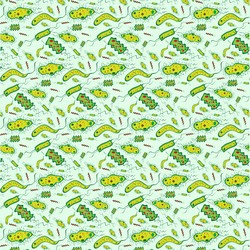Modelling marine microbe interactions
This knowledge gap has been addressed by the EU-funded project MICROBES-2-MODEL (Marine microbial interactions - physiology, genomics and ecological modelling). Scientists studied the interactions between Prochlorococcus, the very small and most abundant photosynthetic organism in the oceans and heterotrophic marine bacteria from the genus Alteromonas and used the resulting data to develop and test mathematical models of microbial interactions. Researchers first investigated the mechanisms of interaction and the physiological responses of Prochlorococcus and heterotrophic strains to liquid batch co-culture. Results indicated that one Alteromonas strain, HOT1A3, enhanced Prochlorococcus MIT9313 growth, yet above a certain threshold inhibited it. In contrast, no such inhibition was observed between this Alteromonas strain and a different Prochlorococcus strain, MED4, or between Alteromonas strains HOT2G3 and either of the Prochlorococcus strains studied. The genes and pathways responding to and mediating these interactions were studied using comparative transcriptomic experiments. The differences in gene expression could be related to different stress levels and their effect on photosynthesis and protein production. Most interestingly, MIT9313 responds to co-culture by expressing a number of novel, short genes, some of which may encode novel signalling peptides. A simple mathematical model of Prochlorococcus growth showed that excretion, mortality and nutrient remineralization, processes, as well as direct chemical communication, should be incorporated into models of marine phytoplankton. Furthermore, studies of these processes would benefit from greater dialogue between those scientists conducting experiments and those generating computer models. MICROBES-2-MODEL results have provided an important step forward towards describing microbial interactions in global biogeochemical models. They are of particular interest given the dominance of Prochlorococcus as a primary producer in the open ocean and may reveal how microbial interactions can occur in such a diffuse environment. This interdisciplinary study will therefore significantly benefit ongoing and future studies of microbial communities and their role in the changing oceans.







